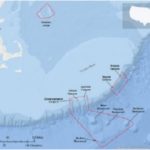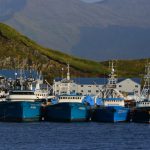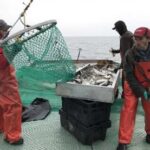Seal summit fails to produce action plan: SEA-NL
 FOR IMMEDIATE RELEASE Wednesday, Nov. 9th, 2022
FOR IMMEDIATE RELEASE Wednesday, Nov. 9th, 2022
Seaward Enterprises Association of Newfoundland and Labrador (SEA-NL) says while federal officials maintain Ottawa has changed its tune regarding the negative impact of seals on East Coast fish stocks, there is still no plan to address the problem.
“A change in tone remains just talk without a plan to back it up,” says Ryan Cleary, SEA-NL’s Executive Director. “Until Ottawa produces a game plan with clear objectives and timelines to deal with the rising seal population, events like this week’s Seal Summit in St. John’s must be seen as window-dressing.”
A two-day seal summit wrapped up Wednesday in St. John’s with an open call by federal Fisheries and Oceans Minister Joyce Murray for proposals to study seals in the marine ecosystem.
Murray first announced the summit this past May following the release of an independent report that recommended a forum to overcome gaps in seal science for commercial fisheries, and to improve the use of seal data gathered by the inshore fleet.
The seal science presented at the summit was alarming, and clearly incomplete.
Of the six species of seal in Atlantic Canadian waters, DFO only has recent population estimates for two — harp and grey seals.
The number of harps in the northwest Atlantic was pegged at 7.6 million in 2019 (up from 5.5 million in 2001), with indications the herd is increasing due to an exploding pregnancy rate.
The grey seal population off the East Coast in the Gulf of St. Lawrence and off southern Newfoundland numbered 366,400 in 2021, a huge jump from 15,000 in the 1960s.
The last survey of hooded seals in 2006 put the number of animals at 593,500, although the species is considered “data-poor.” DFO science also considers itself data-poor for bearded, harbour, and ringed seals.
DFO says there appear to be new “colonies” of grey seals — which are threatening groundfish stocks such as cod in the Gulf of St. Lawrence— as well as “river seals” or animals that take up year-round residence in some rivers
“The irony wasn’t lost on anyone at the summit that seals are a DFO success story in terms of fisheries management at the same time that roughly nine million of them are eating the East Coast fishery out of salt-box house and home,” said Cleary.
DFO’s leading seal scientist, Dr. Garry Stenson, said as late as last year the seal population is not a major factor in declining fish stocks.
However, the department provided information this week that stated seals at current population levels are impacting the recovery of groundfish and pelagic stocks, despite the fact there’s been no fundamental change in seal science.
“Contradictory statements like these leave little wonder people are sceptical of DFO and its seal science,” said Cleary.
Contact Ryan Cleary 682 4862













































